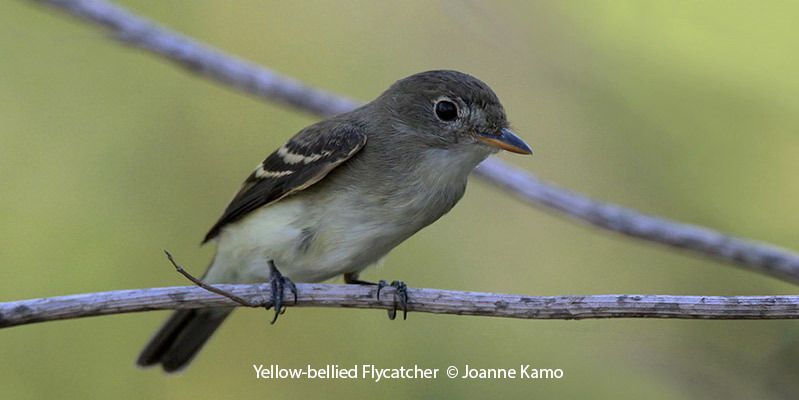Fall Coastal Landbird Migration
-
Analysis prepared by Don Verser
Birding is most often an adventure to observe migration. But migration is not one-way, and most all spring migrants can also be found in the fall. Some landbirds such as Chuck-will's-widow, Olive-sided Flycatcher, Yellow-bellied Flycatcher, Nashville Warbler, Prairie Warbler, Mourning Warbler and Canada Warbler are actually more common on the coast in the fall than in the spring. To fully appreciate the migration of landbirds, try birding the coast in the fall starting in August or even July!
In early July the Black-and-white Warbler reappears and is suddenly very common on the coast. For me, this marks the start of the fall landbird migration. The Blue-gray Gnatcatcher appears on the coast in late July and quickly becomes abundant in the first week of August. It is also interesting how Least Flycatchers become common at the end of July. Louisiana Waterthrush is a very early migrant – the time to see it as a fall migrant is July and early August.
Empidonax flycatchers are especially common in August, so this is a good time to study this challenging group and attempt to learn their call notes. You may find that at times Yellow-bellied Flycatchers are abundant in the woods, and that Alder is more common than Willow.
Charts illustrating the occurrence of landbirds on the upper Texas coast can be created by opening the Fall Migration spreadsheet. This data illustrates that the following species are common at least at times in August: Chuck-will's-widow, Eastern Wood-Pewee, Yellow-bellied Flycatcher, Least Flycatcher, Red-eyed Vireo, Olive-sided Flycatcher, Blue-winged Warbler, Yellow Warbler, Black-and-white Warbler, Northern Waterthrush, Kentucky Warbler, Mourning Warbler, Hooded Warbler, Canada Warbler, Yellow-breasted Chat, and Baltimore Oriole.
Other species that qualify as uncommon sometime in August include: Whip-poor-will, Acadian Flycatcher, Yellow-throated Vireo, Northern Parula, Black-throated Green Warbler, Prairie Warbler, American Redstart, Prothonotary Warbler, Worm-eating Warbler, Lark Sparrow, and Blue Grosbeak. Not to be lost among the migrants are birds such as Orchard Oriole, Yellow-bellied Cuckoo, Painted Bunting, Great-crested Flycatcher, and apparently Gray Catbird, who all nest along the coast in the summer.
About the Spreadsheet: This spreadsheet presents data in graph form of censuses I conducted from 1995 through August 2006. The graphs are species-specific and allow for easy comparison of two species at a time. Bird abundance is reported as the number seen per 5 census hours with the data grouped in weekly divisions. The spreadsheet is divided into two pages, which are accessible via tabs at the bottom of each page. The first page has information about locations and how the data was recorded. The second page contains the graphs and comments on various species.


